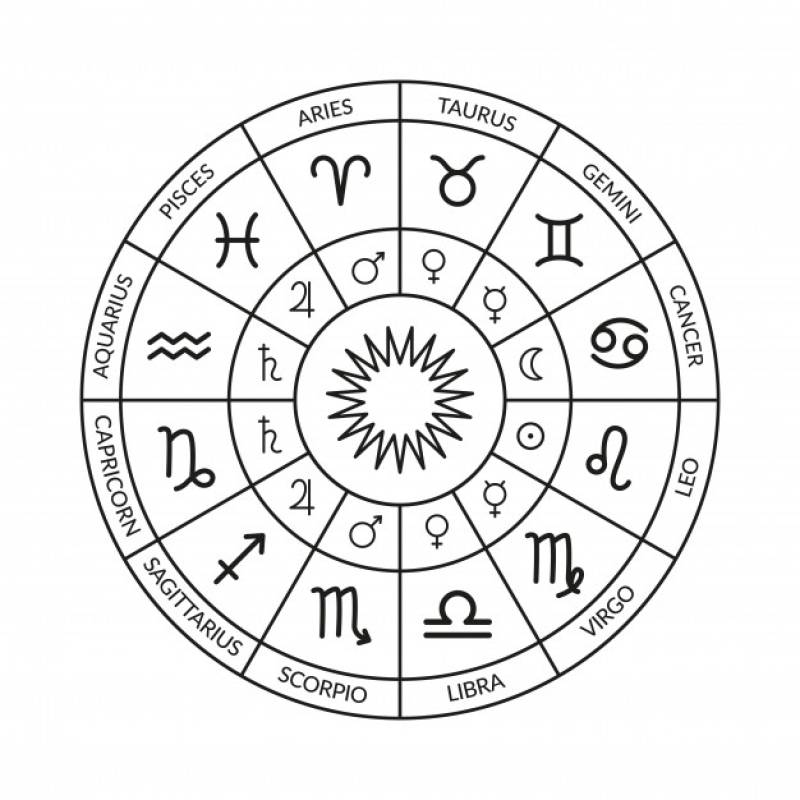This is an old revision of the document!
Table of Contents
The Zodiac
The Atlanteans revered the power of the zodiac and the alignment of the heavens for support of their arcane powers. One element of the ruins of these peoples is the reliance on the structure and lore of this system.
The planets are:
| Planet | Moon | Mercury | Venus | Sun | Mars | Jupiter | Saturn |
|---|---|---|---|---|---|---|---|
| Symbol | ☾ | ☿ | ♀ | ☉ | ♂ | ♃ | ♄ |
| Metal | silver | mercury | copper | gold | iron | tin | lead |
Fomalhaut
Scorpio is associated with the star Fomalhaut. The star Fomalhaut is sometimes called the Autumn Star. It appears in a part of the sky that’s largely empty of bright stars. For this reason, in skylore, Fomalhaut is often called the Lonely One or Solitary One. It’s an easy star to spot. Fomalhaut is more or less opposite the sun in early September right as Scorpio is in ascendance in the zodiac. In early September, Fomalhaut reaches its midnight culmination, meaning that it is highest in the sky to the south at local midnight. Finding Fomalhaut at the time it culminates is easiest, but this happens at different times on different dates.
Fomalhaut is probably is the most southerly bright star that many North Americans know. Granted, a few bright stars farther to the south are visible from tropical and subtropic northern latitudes, but these brighter stars lurk near or beneath the horizon as seen as from middle and far northern latitudes in the Northern Hemisphere. It is known to be the source of arcane power of a destructive nature, and can be used in certain rituals to increase the potency of spells bent on massive damage.
Aldebaran
Aldebaran is the brightest star in the constellation Taurus and is known as the “Eye of Taurus.” The name “Aldebaran” is Arabic, which means “The Follower” because it appears to follow the Hyades star cluster that forms the head of the bull. It is visible between December and the end of April and is known to be a source of arcane power of a sinister nature.
Algol
Algol, the Daemon-Star is a bright multiple star in the constellation of Perseus and one of the first non-nova variable stars to be discovered. Algol's name comes from the Arabic word for “the demon's head.” Early skywatchers may have noticed Algol's periodic dimming. This variation from the norm of the steady, constant heavens earned it an evil reputation.
It is described as a place of a demonic shining entity made of light. It is said to be the source of demonic energy from the void. Days when it is visible are considered to be unlucky. Algol is associated with the Greek Gorgon. The star has received a strong association with bloody violence throughout the world and is associated with death by decapitation.
Algol is easily visible to the naked eye, in the constellation Perseus. Algol fades once every 2.87 days. It fades gradually over the course of several hours, and remains at minimum brightness for about two hours. Once you are familiar with how the constellation should appear, Algol's near-disappearance is a remarkable sight. Like most stars in the sky, Algol is actually a multiple star system. It is a pair of stars locked in a tight orbit, plus a faint third star orbiting at a greater distance. The pair is made up of a bright, hot, massive star, and a bloated but cooler and fainter giant star. The pair orbit each other every 2.87 days. When the giant star passes in front of the bright star, it partially blocks it from our view, causing the whole system to appear fainter to us. Algol is an eclipsing binary star.

